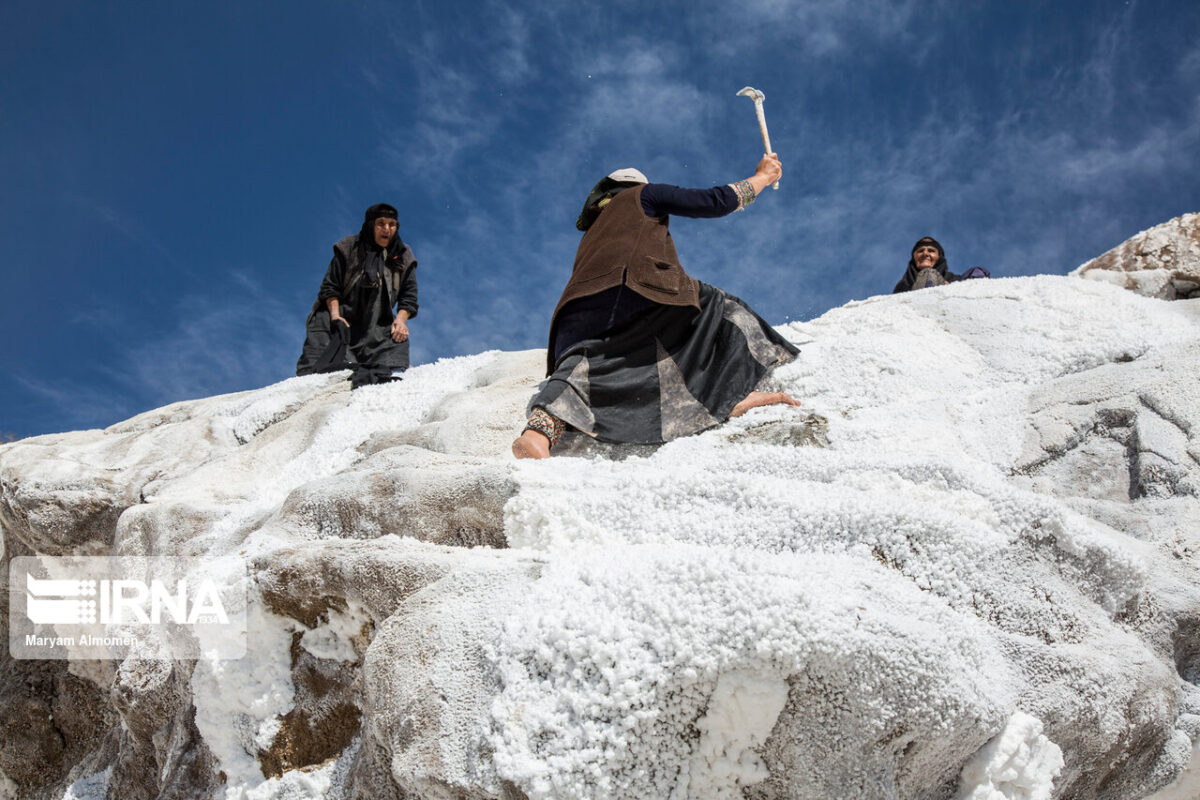Women villagers are busy collecting salt from rocks covered in dried salt-water from the beginning of the spring season until mid-autumn. As of mid-April, the water flowing from a salt spring is channeled onto the rocks. Water evaporates after a few days, leaving behind crystals of salt. Women peel the salt off the rocks with an axe.
Then they bring the separated pieces of salt downhill to mill them using big stones. Afterwards, the crushed salt is put into bowls which function as molds. Then they are put in the sunlight to dry and harden. The dried salt is then carried with pack animals down the valley where trucks arrive from different regions to collect the salt.
This salt contains special minerals suitable for both human and animal use. The reason why the water from the springs contain different minerals is that it flows through different underground layers of rock.
